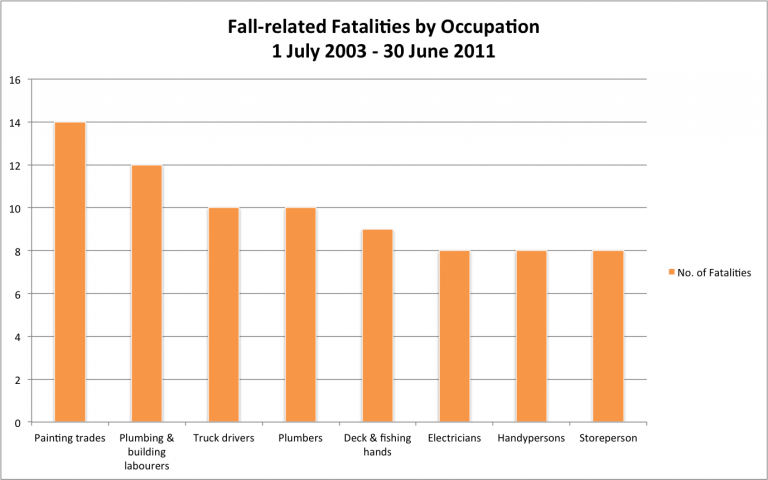Any work activities involving work at heights such as those involving ladders, elevated work platform, scaffolding, trucks, plant / machinery and swinging stages present major risks to workers.
Statistics released by Safe Work Australia show that, from 1 July 2003 to 30 June 2011, 232 workers killed due to a fall from height. Of these falls it is important to note that the risk of working from heights of two metres or less should not be underestimated, with 30% of these falls being from two metres or less.
Of these 232 fatalities, the following occupation groups recorded the highest number of deaths related to falls from a height.
- Painting trades (14 fatalities)
- Plumbing & building labourers (12 fatalities)
- Truck drivers (10 fatalities)

Top 5 Safety Tips for Work At Heights
1. Know What Your Responsibilities Are
Under the WHS Act, a Person Conducting a Business Unit (PCBU) must ensure, so far as is reasonably practicable the provision and maintenance of a working environment that is safe and without risks to health, this includes provisions for the prevention of falls.
To comply with the WHS Act, a person conducting a business unit or undertaking (PCBU) must prepare a SWMS for any works that involve a person falling two metres or more.
2. Perform Risk Assessments
Create awareness of the hazards and risks associated with the works you are performing by conducting a risk assessment. Risk assessment tools assist you in identifying hazards, analysing the risks associated with that hazard and determining the next cause of action to minimise the risks.
3. Use the correct equipment
Decide what the best equipment is for the task.
Avoid the use of ladders where possible. Between 2009 – 2011 there were on average 3 injuries per day related to a fall from a ladder.
4. Be aware of fragile surface
Exposure to potentially unstable / fragile surfaces can pose a risk to workers. Where there is a potential for someone to fall two metres or less due to unstable surfaces control measures to cordon off the area to prevent people walking the area or fall prevention equipment to minimise the impact of a fall event should be introduced. Remember to consider all possible safety measures if exposure to unstable surfaces is present.
We have recently written about the dangers of fragile surfaces in our post Reminder to consider hazards of brittle or fragile roofing materials
5. Carry out regular training
It’s important to ensure that all workers performing work at heights are aware of the risks involved with the task. Ensure regular training is performed and relevant licenses are up-to-date.
Top 5 Safety Tips for Work At Heights Reported by Monica. Available from <http://content.safetyculture.com.au/news/index.php/09/top-5-safety-tips-work-heights/#.V-5n6PB9601> [05:03pm, Monday 19 September, 2016]









